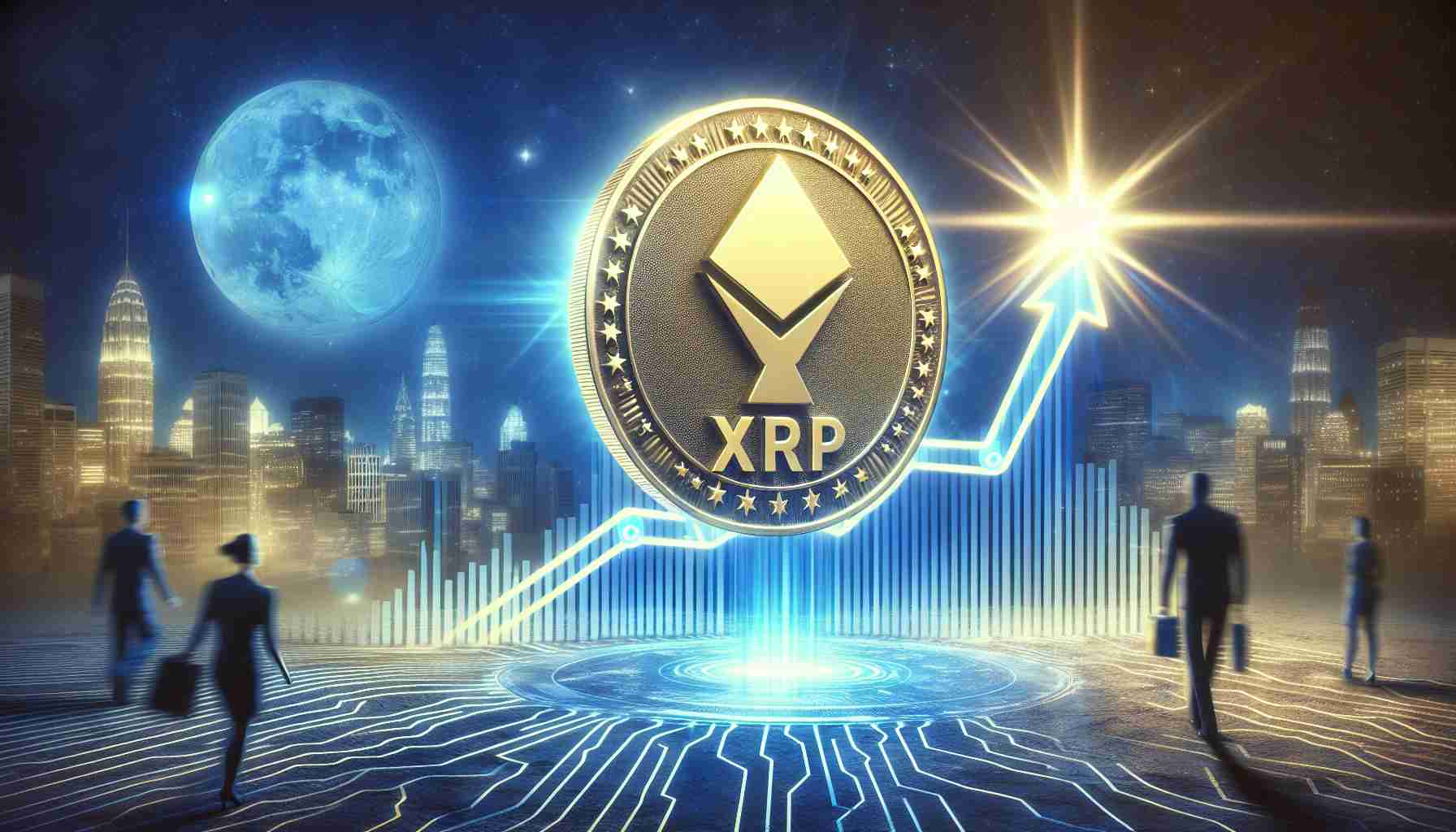Przyszłe Perspektywy XRP i Lunex Network
Rynek kryptowalut tętni życiem, gdy XRP wyznacza ambitny cel cenowy na poziomie 50 USD, wywołując gorące dyskusje wśród inwestorów. Chociaż wykonalność tej kwoty pozostaje niepewna, inny gracz, Lunex Network, robi znaczące postępy, niedawno zbierając 6 milionów dolarów podczas swojej przedsprzedaży.
Lunex Network, aktualnie wyceniane na 0,0054 USD, ma szybki zamiar osiągnięcia swoich celów przedsprzedażowych. Platforma oferuje unikalne rozwiązanie handlowe łączące szybkość i przystępność, które przyciąga zarówno inwestorów detalicznych, jak i instytucjonalnych. Jej zdecentralizowana, zorientowana na prywatność struktura spełnia rosnące wymagania dotyczące bezpieczeństwa użytkowników w dzisiejszym cyfrowym krajobrazie.
Podkreślając swoje korzystne cechy, Lunex pozwala użytkownikom na wymianę wśród 50 000 kryptowalut na ponad 40 blockchainach po konkurencyjnych stawkach. Atrakcyjny program stakingowy obiecuje zwroty do 18% APY, co czyni go kuszącą opcją dla tych, którzy są zainteresowani generowaniem pasywnego dochodu.
XRP w międzyczasie umacnia swoją pozycję jako wiodąca kryptowaluta. Aktywa te niedawno odzyskały pozycję trzeciej największej kryptowaluty pod względem kapitalizacji rynkowej, przyciągając zainteresowanie wielu japońskich banków. Te instytucje integrują XRP, aby umożliwić efektywne i opłacalne transakcje międzynarodowe.
W miarę zbliżania się znaczących wydarzeń dla XRP i Lunex Network w 2025 roku, entuzjaści mogą uznać za interesujące śledzenie ich postępów. Rośnie zainteresowanie Lunex, co stwarza obiecującą okazję dla inwestorów na tym dynamicznym rynku. Poznaj Lunex i rozważ udział w jego przedsprzedaży!
Analiza Przyszłości: Ambitny Wzrost XRP i Lunex Network
Rynek kryptowalut nieustannie ewoluuje, a dwa z jego najczęściej omawianych nazwisk, XRP i Lunex Network, przyciągnęły uwagę inwestorów zarówno starych, jak i nowych. Z odważnymi ambicjami XRP i innowacyjnym podejściem Lunex Network, nadchodzące lata zapowiadają znaczące zmiany w krajobrazie.
Potencjalny Wzrost XRP
Inwestorzy są podekscytowani odważnym celem cenowym XRP wynoszącym 50 USD, co wywołuje dyskusje na temat jego wykonalności w obliczu wahań rynku. Podczas gdy konkretne przewidywania pozostają spekulacyjne, strategiczne partnerstwa XRP z dużymi instytucjami finansowymi, szczególnie w Japonii, dobrze go pozycjonują do zwiększenia adopcji. Gdy japońskie banki badają XRP w kontekście efektywnych transakcji międzynarodowych, może to potencjalnie prowadzić do wzrostu popytu, a co za tym idzie, jego ceny rynkowej.
Szybki Wzrost Lunex Network
Z drugiej strony, Lunex Network robi furorę w sferze kryptowalut dzięki swojemu niedawnemu sukcesowi w przedsprzedaży, zbierając 6 milionów dolarów. Aktulanie wyceniane na 0,0054 USD, Lunex toruje sobie drogę do znacznej penetracji rynku, oferując zdecentralizowane rozwiązanie handlowe, które stawia na szybkość i efektywność kosztową. Te czynniki są szczególnie atrakcyjne, biorąc pod uwagę rosnące wymagania dotyczące bezpieczeństwa ze strony użytkowników w dzisiejszym cyfrowym środowisku.
Jedną z wyróżniających cech Lunex Network jest jego zdolność do ułatwienia wymiany spośród szerokiej gamy ponad 50 000 kryptowalut na 40 różnych blockchainach. Ta unikalna zdolność nie tylko zwiększa płynność, ale także przyciąga zróżnicowaną grupę użytkowników, od przypadkowych inwestorów po graczy instytucjonalnych. Co więcej, program stakingowy Lunex, obiecujący zwroty do 18% APY, ma potencjał przyciągnąć inwestorów szukających możliwości pasywnego dochodu, podkreślając zobowiązanie platformy do rentowności dla użytkowników.
Kluczowe Specyfikacje i Cechy Lunex Network:
– Szerokie wsparcie kryptowalut: Zdolność do wymiany wśród 50 000+ kryptowalut na ponad 40 blockchainach.
– Programy stakingowe: Atrakcyjne zwroty do 18% APY.
– Decentralizacja i bezpieczeństwo: Operacje zorientowane na prywatność, aby spełnić współczesne potrzeby zabezpieczeń.
Analiza Porównawcza: XRP vs. Lunex Network
– Pozycjonowanie na rynku: XRP przekształca się w mainstreamowe systemy finansowe, podczas gdy Lunex Network zabezpiecza swoją niszę w zdecentralizowanym handlu.
– Płynność: Szerokie wsparcie aktywów Lunex Network oferuje niezrównaną płynność w porównaniu do tradycyjnych giełd.
– Potencjał inwestycyjny: Ugruntowana obecność XRP kontrastuje z nowatorską strategią Lunex Network, mającą na celu szybki wzrost i pozyskiwanie użytkowników.
Trendy i Prognozy
Trendy wskazują, że zarówno XRP, jak i Lunex Network mogą być fundamentami w ewoluującym obszarze kryptowalut. Oczekiwane wydarzenia na 2025 rok wskazują na potencjalnie transformacyjny okres, gdy popyt użytkowników na zdecentralizowane rozwiązania i efektywne metody transakcji nadal rośnie.
Inwestorzy, którzy pragną badać nowe możliwości w przestrzeni kryptowalut, powinni rozważyć uważne śledzenie tych dwóch platform, gdy kroczą ścieżką ku prominencji.
Dla tych, którzy są zainteresowani aktywnym udziałem, może to być odpowiedni czas, aby zagłębić się w przedsprzedaż Lunex Network, biorąc pod uwagę jego unikalne oferty i konkurencyjne przewagi na rynku.
Jeśli chcesz być na bieżąco z tymi wydarzeniami i dalej badać możliwości inwestycyjne, odwiedź XRP oraz Lunex Network.
